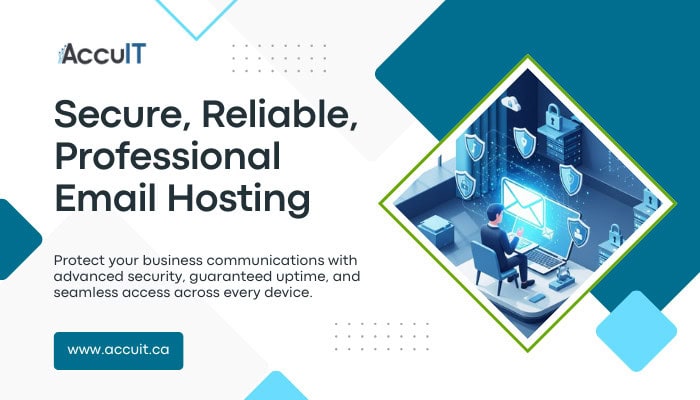When business technology fails, the impact is immediate. Systems slow down, employees lose productivity, and customer-facing operations suffer. For many Toronto businesses, these disruptions are no longer rare events but recurring operational risks.
As organizations rely more heavily on digital systems, expectations from a Toronto managed service provider have shifted. Businesses are no longer looking for reactive fixes. They expect structured support, predictable costs, and systems that remain stable as operations scale.
This guide outlines what Toronto businesses should realistically expect from a managed service provider in 2026, based on how organizations operate today.
🚨 Why Toronto Businesses Are Moving Away from Reactive I.T. Support
Understanding the Operational Cost of Downtime
Reactive I.T. support models address problems only after systems fail. By the time issues are resolved, productivity losses, customer disruption, and internal delays have already occurred.
Industry commentary published by CompTIA has identified unplanned downtime as a significant operational challenge for small and mid-sized businesses, particularly when systems lack proactive oversight.
For Toronto businesses operating in competitive markets, even short interruptions can affect service delivery and customer trust.
Common consequences of reactive I.T. models include:
- Repeated system interruptions
- Delayed issue resolution due to lack of monitoring
- Increased pressure on internal staff
- Higher long-term support costs
These challenges are driving organizations toward managed service models focused on prevention rather than response.
📊 What a Toronto Managed Service Provider Is Expected to Handle
Beyond Break-Fix Technical Support
A managed service provider is responsible for the ongoing health of business I.T. systems. This includes continuous monitoring, maintenance, and optimization of infrastructure such as servers, networks, and workstations.
Instead of waiting for failures, managed services focus on identifying early warning signs like performance degradation or recurring system errors. Addressing these issues early reduces downtime and limits disruption.
Gartner describes managed services as an operational model where day-to-day technology management is handled externally, allowing internal teams to focus on core business functions.
Proactive and structured managed I.T. services for Toronto businesses are delivered through AccuIT’s managed I.T. services, allowing organizations to move away from fragmented support models.
⚙️ Why Local Toronto MSP Support Still Matters
Proximity, Accountability, and Business Context
Local expertise remains important despite the rise of remote support. A Toronto managed service provider understands the regional business environment, infrastructure realities, and service expectations within the GTA.
Local providers offer advantages such as:
- Faster on-site support when remote resolution is not sufficient
- Clear communication during operational disruptions
- Familiarity with infrastructure challenges common to Toronto businesses
Industry surveys published on Clutch’s managed service provider research show that small and mid-sized organizations prefer working with local providers due to accessibility and relationship continuity.
This local understanding contributes to smoother daily operations and more reliable long-term support.
💰 Predictable I.T. Costs Through Managed Services
Why Budget Control Is a Key Expectation
One of the main reasons businesses engage a managed service provider is financial predictability. Reactive support often leads to irregular expenses tied to emergency fixes and system failures.
Managed services typically operate on a structured monthly model. This allows businesses to plan I.T. spending alongside other operating costs rather than reacting to unexpected invoices.
Toronto businesses seeking predictable operational costs increasingly rely on structured support models like AccuIT’s managed I.T. services to maintain budget control while scaling operations.
🛡️ Backup and Business Continuity as Core Expectations
Protecting Data Without Disrupting Operations
Data protection is a core responsibility of any managed service provider. System failures, human error, and security incidents continue to disrupt Canadian businesses across industries.
A Toronto managed service provider should prioritize secure off-site backup designed for system and file restoration to support business continuity when incidents occur. Backup focuses on versioning and recovery readiness rather than specialized recovery scenarios.
Public guidance from the Canadian Centre for Cyber Security has consistently identified downtime and data loss as ongoing operational risks for organizations.
Reliable backup and recovery services are a central component of AccuIT’s data backup solutions, helping businesses maintain operational continuity when issues arise.
📉 Signs Your Business Has Outgrown Reactive I.T. Support
Many organizations continue using reactive I.T. support until issues become frequent or disruptive. Common warning signs include:
- Recurring system slowdowns or outages
- Limited support availability outside business hours
- Difficulty managing growing infrastructure
- Management time spent resolving technical problems
As businesses expand, technology environments become more complex. Without structured oversight, small problems can escalate into larger operational challenges.
At this stage, working with a Toronto managed service provider becomes a practical step toward long-term stability rather than a reaction to a single incident.
📌 Choosing the Right Managed Service Provider in Toronto
Selecting a managed service provider is a long-term business decision. Businesses should expect:
- Proactive monitoring and maintenance
- Clear communication and accountability
- Backup services treated as essential
- Cost structures that support growth
When aligned properly, managed services help organizations treat I.T. as a stable operational function rather than an ongoing risk.
Many Toronto businesses begin evaluating providers through AccuIT’s managed I.T. services to assess fit and operational needs.
💡 Ready to Strengthen Your I.T. Foundation?
If your organization is evaluating whether a Toronto managed service provider is the right fit, a professional review of your current systems can help identify risks and improvement opportunities.
You can request a complimentary assessment through AccuIT’s contact page, and gain clarity on how proactive managed services can support your operations now and into the future.










